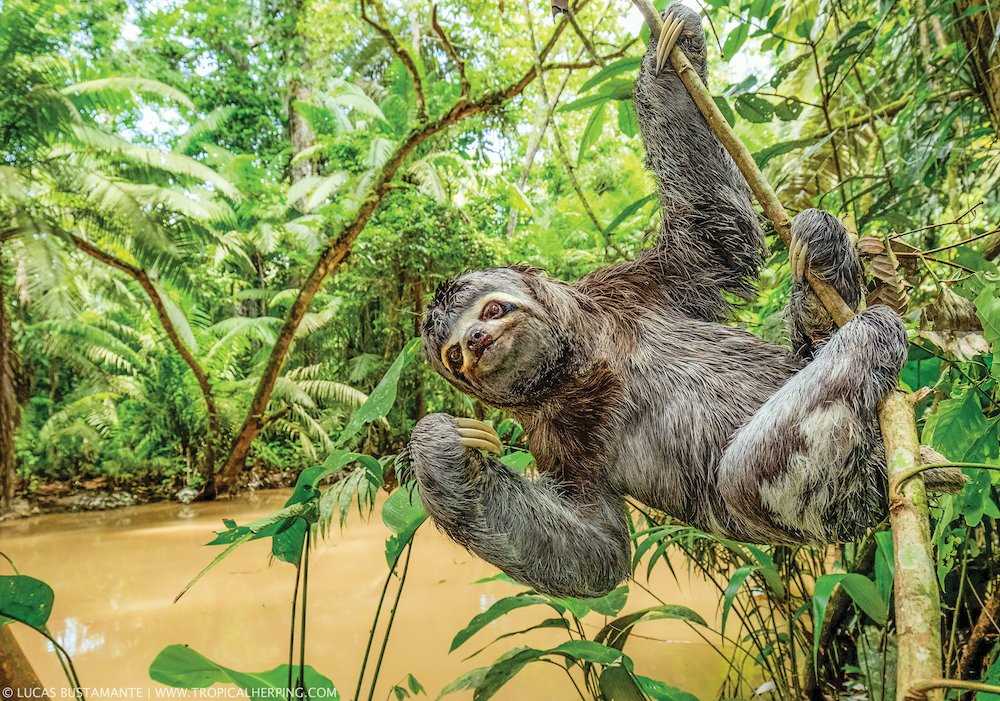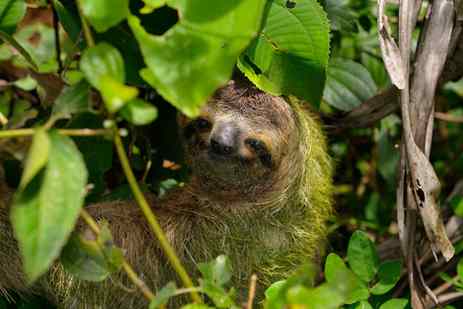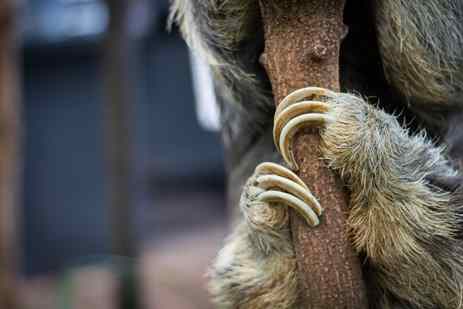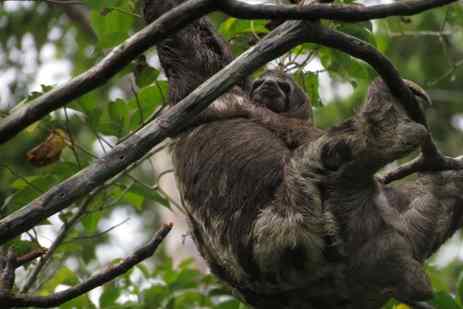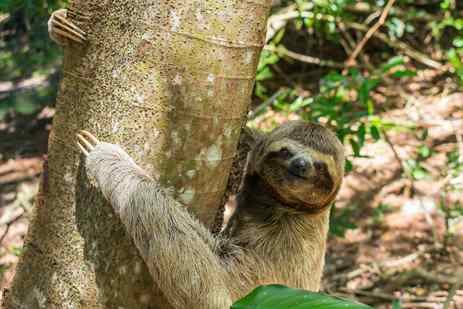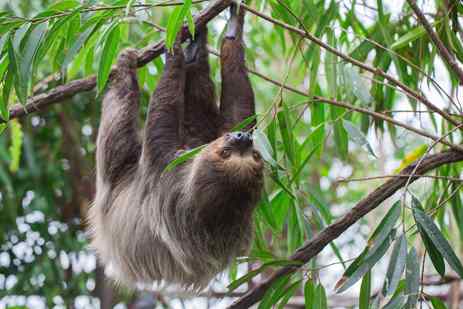Imagine spending much of your day asleep? That’s the leisurely life of a brown-throated sloth. These arboreal mammals spend the bulk of their time hanging around the cecropia tree canopy in tropical places like the Pacaya-Samiria National Reserve in Peru or the cloud forests of Costa Rica. One could say munching leaves is their livelihood. The herbivores even have a special tongue with sharp, backward-directed spines to aid in slicing the thick leaves. What’s more, they have huge intestinal tracts, and a four-chambered stomach filled with bacteria to help them digest the roughage. All this eating is a lot of work, so it makes sense that when brown-throated sloths are not snacking, they are sleeping or just relaxing upside down.
While it may seem that a sloth’s waking hours are pretty monotonous, not sleuthing around has a benefit. Turns out, their stealthy slowness (they only move about 40 yards each day) is what keeps these highly-camouflagued creatures safe from predators. An animal that hangs still is harder to spot than one swinging around. If you're exploring the rainforest, be patient as you search for that sloth photo op. You might have better luck if you look for sloths in sunny spots since they have lower body temperature and love to bask in the warm rays. And you can always rely on the keen eyes of our expert naturalists as they guide you on the adventure. —Text by Yelena Moroz Alpert
Read below for more fascinating facts about three-toed sloths:

